Trekking with Llamas
In summer it’s time to venture into the backcountry and camp under the stars, sit by the campfire, listen to wolves howl in the night, wake to calls of cranes at sunrise. Yellowstone National Park beckons with over 1,300 miles of trails to be explored and charming campsites along creeks and rivers, in canyons, and on the shores of high country lakes to be called home for a few nights. Let’s go! But then again, there is the unpleasant prospect of a heavy pack on a tired back for miles on end. And who really wants to sleep on a paper-thin mattress? And that freeze-dried food? Isn’t there somebody who can carry our load for us? Some way we can bring that extra blanket, the bigger stove, the yummy chili, the bottle of wine?
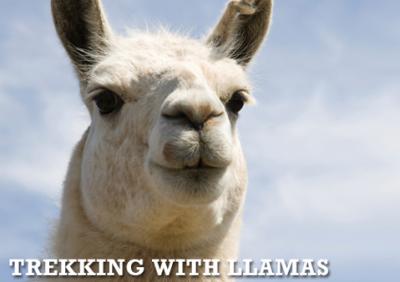
Enter the llama, backcountry sherpa on four legs with an endearing personality to boot. Aloof yet cooperative, the llama is the hiker’s choice of pack animal that is easy to handle and easy on the environment with its soft two-toed feet and browsing habits similar to native ungulates such as elk and deer. Even its bean-shaped dung blends in conveniently with that of local herbivores. These South American imports are one of the oldest domestic animals in the world. Over 6,000 years of selective breeding have made them the safest and easiest-to-train pack animals. Llamas carry the load entrusted to them with nonchalant dignity, follow their handler with little training, and generally are a delight on the trail. Their charming banana-shaped ears swivel as they scan the sounds of the wild and alert their human companions to wildlife nearby that otherwise might have gone unnoticed. Llamas’ lateral gait known as pacing as well as their blood’s ability to bind with oxygen in a unique way makes these athletic Andean packers extremely agile and enduring on rocky slopes and in high altitudes.
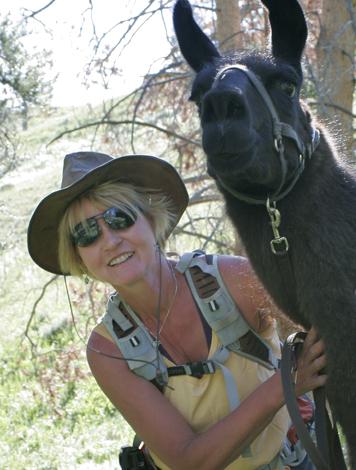
Today, on a warm July day, we trek down the trail to Cache Creek in the Northeast corner of Yellowstone National Park. Gorgeous Lamar Valley stretches to the west of us. Open meadows, green slopes, and rocky ridges grace our views ahead. Herds of bison graze and grunt not far from our group. We walk the trail in a line, each of us leading a woolly companion. The llamas carry saddles and panniers filled with our creature comforts: kitchen equipment, food coolers, tents, sleeping bags, chairs, tables, and yes — two bottles of wine. Llamas with packs walk about as fast as an unburdened person and are able carry loads of about a quarter of their body weight, meaning 50 to 80 pounds.
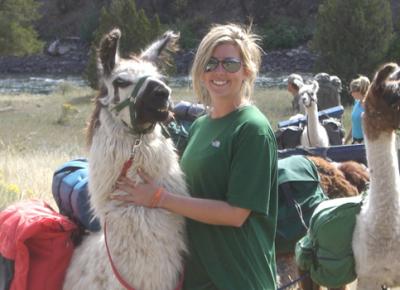
Our eyes take in the landscapes around us, while our faithful pack animals bend their long necks to look over our shoulders (a charming sight). Before long, llamas and people have bonded and are getting along just fine. Suddenly, all llamas stop and stare in the same direction. We grab our binoculars, and sure enough: a grizzly bear is foraging unconcernedly along the far tree line. Domingo lets loose a shrill alarm call and instantly the other llamas join him. A predator or any animal that raises a llama’s suspicion, no matter how far away, will cause it to sound a loud warning nobody is able to ignore. Despite Domingo’s obvious worry, we smile and enjoy watching the bear at a safe distance. We continue our hike and before long arrive on the banks of Cache Creek. The llamas are quickly unloaded and unsaddled and turned out to graze, while we set up tables, chairs and tents. Then we are ready for our deserved relaxation with cheese, crackers, and wine, followed by that yummy bison chili, simmering on the Coleman stove.
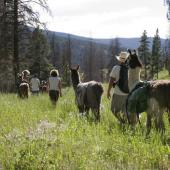
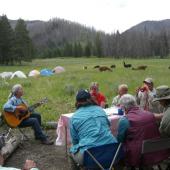
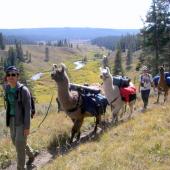
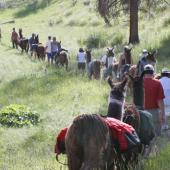
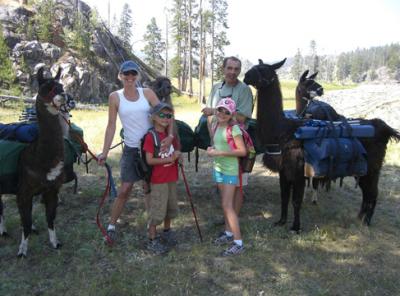
After dinner, as the stars twinkle in the huge sky we enjoy our time by the campfire. The llamas have bedded down after their meal of good, tasty backcountry grass and forbs. Their long lead lines are attached to durable net bags filled with rocks. This allows them to graze at their leisure but not wander too far. This is a system we have developed over time that has proven to be the best for animals and vegetation. Soon, we hang our food bags on the high horizontal pole fastened by the Park Service between two tall trees, out of reach of hungry bears. As we snuggle into our sleeping bags, we know that we can rely on our banana-eared companions to warn of any danger in the night. Whoever passes through the night will have to get by the llamas and their alarm system. The night passes without incident. Then over breakfast urgent, high-pitched noise from the llama meadow makes us jump and leave our steaming coffee mugs as we scramble through sagebrush. We arrive in time to behold a stately moose passing through the excited llama group and heading into the willows. We exhale with relief. Upon our return the coffee is cold but who needs caffeine with all the action. Now we are ready to pack up camp and head on out. As our signature call — “Let’s go llamas! — resounds across Cache Creek, our long-necked companions fall into step behind us, and we march into another day of great backcountry adventure.
Two days and many miles later, we arrive safely back at the trailhead, where the llamas jump into their trailer and we say good-bye to new friends. As we drive off, and Yellowstone gets smaller and smaller in our rear view mirror, we are already making plans for our next trek, this time down the trail of Fan Creek in the Northwest Corner.
ABOUT THE OUTFITTERS
Yellowstone Llamas, the original llama outfitter in Yellowstone National Park, has been operating in the park for over 25 years. Treks are customized and will fit almost anybody’s priorities. Our llamas are gentle and easy to handle, our guides experienced outdoor enthusiasts.
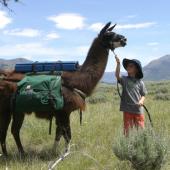
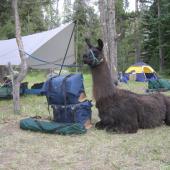
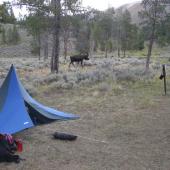
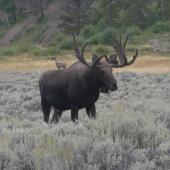
Other companies such as Llama Trips in Yellowstone, offer trekking tours through Yellowstone as well as the Gallatin National Forest. In Northern Montana, Swan Mountain Outfitters have added llama treks a few years ago to their operation. They realized the desire of their hiking clients to travel light on the land in beautiful Glacier country.
Yellowstone Llamas
406-586-1155
(Permitted in Yellowstone National Park)
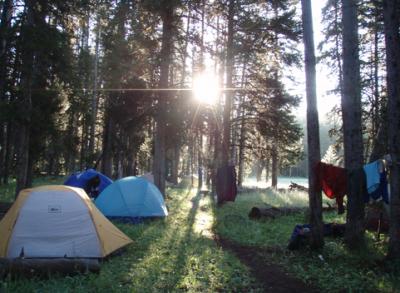
Llama Trips In Yellowstone
406-587-2661
(Permitted in Yellowstone National Park)
Swan Mountain Llama Trekking
406-387-4405
(Tours in the Swan Valley)
*For a related article in the archives see Horse Packing 101 by Dan Aadland






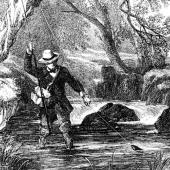





Leave a Comment Here